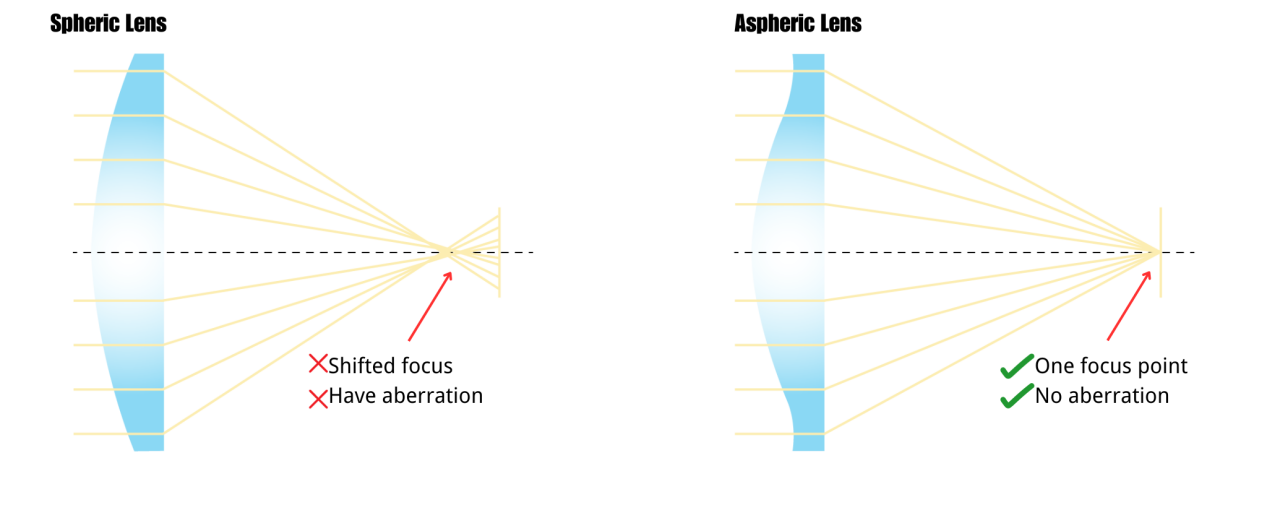When purchasing a red dot sight, you may notice the difference in the lens. Some may describe it as an aspheric lens, while others are spherical lenses.
You may feel confused about how to choose the right red dot sight. Today, Victoptics will introduce their differences. After reading this blog, you will know which is perfect for you.
What Is Spheric Lens Red Dot Sight?
In the beginning, let’s talk about the spheric lens. The spheric lens refers to a traditional simple lens, and it usually has one or both sides concave/convex. Moreover, spheric lenses are commonly made by grinding and polishing, with either one or both sides being concave or convex or one surface being flat. Spherical lenses have a uniform curvature across their surface, which is typically spherical.
What Is Aspheric Lens Red Dot Sight?
In contrast to spherical lenses, aspheric lenses have a non-spherical lens surface. And unlike conventional spherical lenses, aspheric lenses have varying curvatures across their surface, allowing for improved optical performance.

Knowing the characteristics of spheric and aspheric lenses, we can know that an aspheric lens can offer better optical performance. Because aspheric lenses help minimize various optical aberrations such as spherical aberration, coma, and astigmatism. Likewise, red dot sights with aspheric lenses can provide clearer and more distortion-free images, improving overall optical performance.
Advantages of Aspheric Lenses Red Dot Sight
Except for better optical performance, aspheric lenses red dot sight has more advantages to learn about.
Fewer Lens Elements
Aspheric lenses can achieve comparable or superior optical performance with fewer lens elements. This reduction in elements results in a lighter and more compact red dot sight.
Optimize Light Transmission
Aspheric lenses also optimize light transmission, allowing more light to reach the user’s eye. While some designs minimize parallax, they may require advanced processing. Aspheric lenses are particularly suitable for red dot sights with a short focal length.

Disadvantages of Spherical Lenses Red dot sight
Compared to aspheric lenses, spheric lenses are more prone to optical aberrations such as spherical aberration. This can result in reduced image quality and potential distortion of the red dot projection. Additionally, spheric lenses may require a thicker lens profile, resulting in a heavier red dot sight compared to those with aspheric lenses.
Shortcomings of Aspherical Lenses
Aspheric lenses outperform spherical lenses, according to the above information. Then what are the downsides of it?
More Production Costs, Thus More Expensive
Aspheric lenses tend to be more difficult to manufacture using conventional processes such as grinding and polishing. This is because aspheric lens elements are more complex than spherical ones. As a result, this can increase the production cost of red dot sights. On the contrary, spheric lenses are generally less expensive to manufacture compared to aspheric lenses. This cost-effectiveness makes spheric lenses more accessible and widely used in many red dot sight models.
To sum up, aspheric lenses offer superior optical performance, a lightweight design, and a wider field of view, albeit at a higher cost. On the other hand, spheric lenses provide a cost-effective solution with proven technology, although they may sacrifice some optical quality and result in a bulkier design.
Victoptics manufactures both aspheric and spheric lens reflex sight for you to choose from.
Summary
| Aspheric Lens | Spheric Lens |
Pros:
Suitable for red dot sights with a short focal length Cons: More cost-effective More accessible and widely-used |
Pros:
1. Wider field of view 2. Less interference Cons:
|
